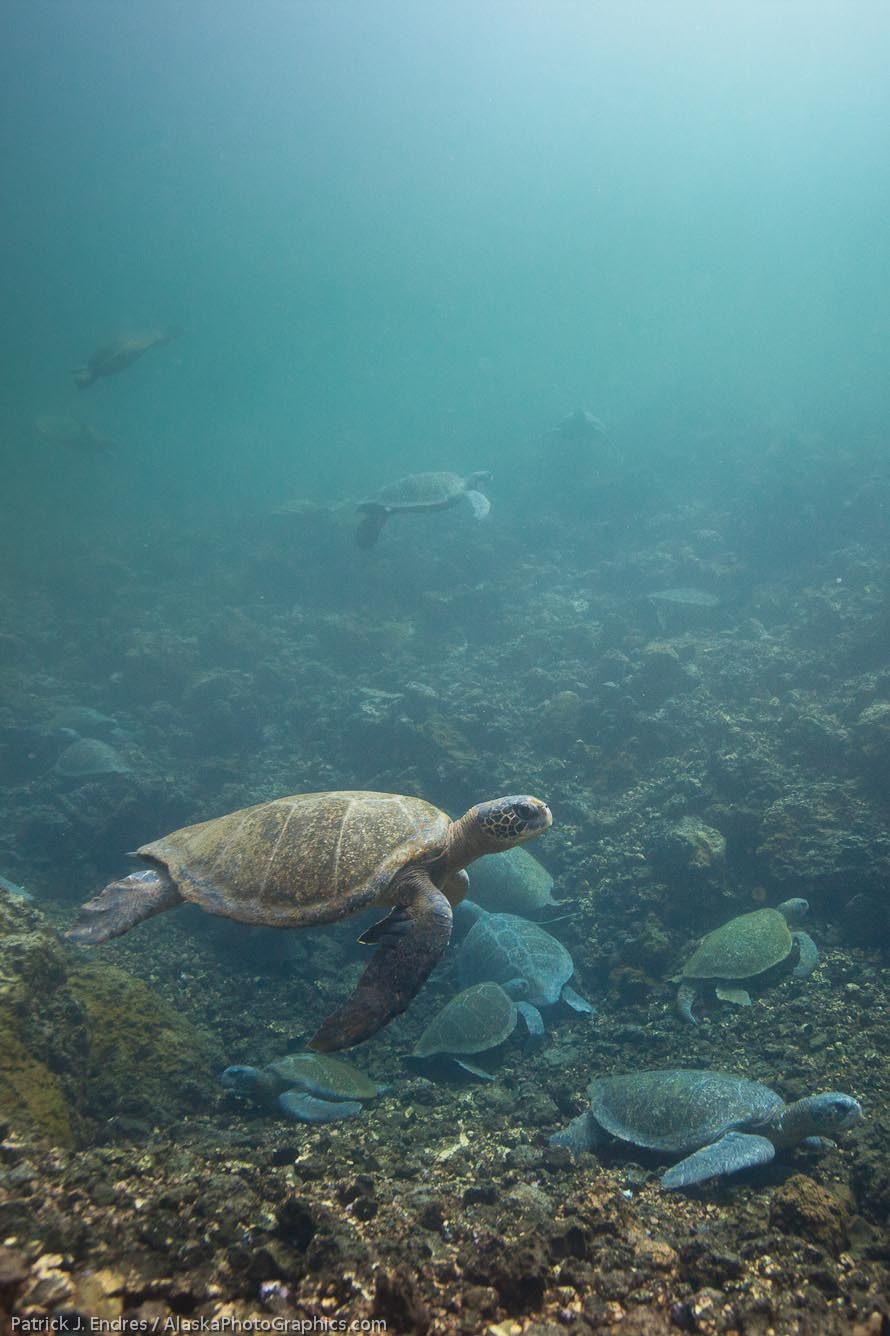
This is my favorite underwater shot from my snorkeling forays in the Galapagos Islands. There are 14 sea turtles in this frame, but our guide counted 34 resting in this protected cove! The image is razor sharp in the center. Galapagos Green sea turtle, Isabella Island, Galapagos Islands, Ecuador. Canon 5D Mark II, 17-40mm f/2.8L (17mm) 1/800 sec @ f/4.5, ISO 800, Ikelite underwater housing with dome port.
Perhaps there are some of you out there who have wondered about getting a housing for underwater, or over/under photography. I have used the ewa-marine U-BXP100 plastic bag housing for years, and decided to break into a system with more control, and therefore purchased the Ikelite housing for my Canon 5DII. I took the housing to the Galapagos and used it for the first time while snorkeling there on about 6 or 7 dives.
Let me begin by saying that my underwater photography experience is restricted to snorkeling, and I’m not even going to venture into the issues surrounding scuba, as that is a totally different league of gear and activity. For, me, snorkeling is gear-simple and is an easy and flexible way to explore the underwater world, with the obvious limitations of one breath per dive. The photographic pursuit and options are equally limited by this “one breath”, but nevertheless, they can produce some good results, and a lot of fun.
My first reaction to the Ikelite housing when it arrived at my office was “WOW” the thing is huge! The 8″ dome port won’t even fit in my Kiboko camera bag. It is also heavy, although not an issue when underwater since it has just a slightly negative buoyancy. All of the control knobs are fantastic, giving you access to every button on the 5DII except the little toggle button on the back. In comparing my previous trip snorkeling in the Galapagos, where I used the EWA marine housing, to this trip, with the Ikelite, here are a few pros and cons I’ve gathered:
PROS of the Ikelite
- Easy access to all camera functions
- Off camera flash system available (although better utilized when doing scuba)
- Control of lens zoom is easy allowing for versatility
- If people see you with it, they will think you are a real photographer
CONS of the Ikelite:
- It is huge
- It is heavy
- You are restricted to use with one specific camera
- The use of different lenses requires additional parts
- Some lens restrictions (like the 16-35mm f/2.8L, wont work, for example)
- If people see you with it, they will want to ask you questions
PROS of the EWA Marine housing
- Super light weight
- Packs very small
- Fits a variety of camera bodies and lenses without extra parts
- Can fit a pocket wizard receiver inside the housing to fire the body remotely (I have used this to place the camera underwater and watch from above to fire the shutter (i.e. for bird and fish photography)
- It is 1/4 the price of the Ikelite
CONS of the EWA Marine housing
- You need to add weight for neutral buoyancy
- Much more of a pain to get the camera in the bag, seal it and suck the air out.
- Once in the housing, camera features are hard to access, and can be very difficult to change (especially in cold Alaska waters). Sometimes you need to open the housing up to make the dial changes.
- Not as easy to hold on to as the Ikelite (but reasonable)
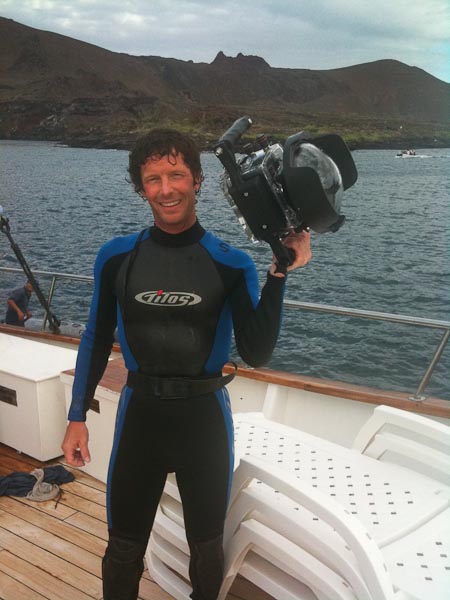
This photo was taken for the doctor who performed surgery on my left shoulder 7 weeks prior, so I held this Ikelite beast up for a successful surgery thank you snapsh0t
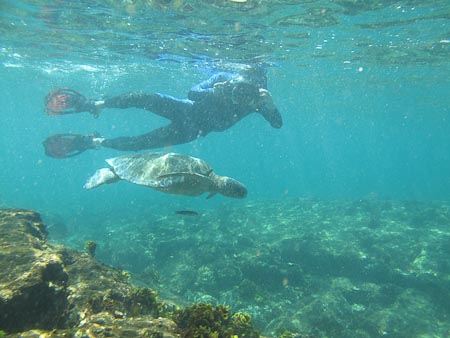
Me photographing a Galapagos green sea turtle with the Ikelite housing.
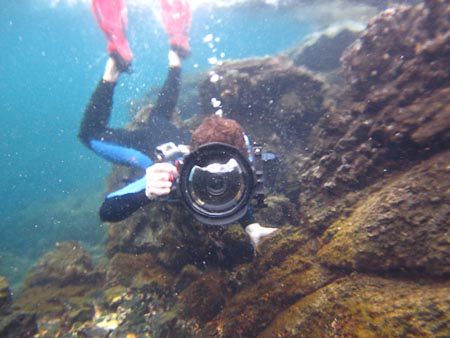
The Ikelite is one big housing
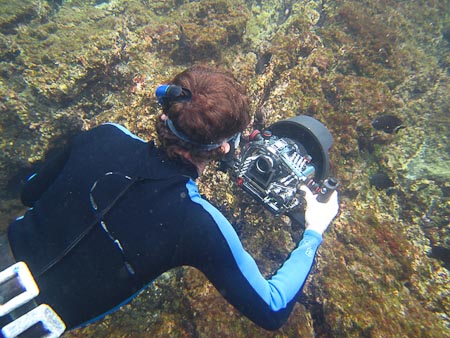
Easy access to the back of the camera dials and knobs
In summary, as long as my underwater work is restricted to snorkeling, I am likely to stick to the EWA marine housing for size, weight, and versatility. (or explore some other housing options in between like the Delmar surf housings) While the individual controls of the Ikelite are attractive, you really don’t have the luxury of air/time, to make a lot of camera adjustments when snorkeling. Scuba is a different story altogether however. My travel seems to include underwater as an add on bonus more than a serious focus, and therefore the addition of a lot of specific underwater camera gear becomes an obstacle for me. Both of these housings have their appropriate use and your choice will depend on specifically what you seek to accomplish.






